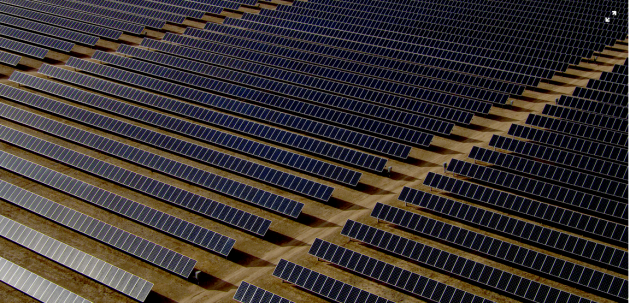Cables are necessary for the architecture and design industry. We need cables in our residential plots or commercial enterprises to supply power from the power grid. In the industrial and architectural sectors, these cables have to be wired considering several factors on the mind.
Such as the voltage needed for the power supply, the composition of the wire, and an assurance that it can withhold multiple geographical conditions.
And an ultimate answer to the above requirements is that MV cables are medium voltage cables that are the perfect match for architectural buildings as they provide a universal medium voltage that suits most applications. Moreover, these cables are geographical proof, which means that MV cables are not significantly affected by changing environmental conditions.
And that makes it the perfect choice for indoor and outdoor architecture buildings.
In this article, we will discuss the significance of MV cables in architecture and design and shed some light on the types of MV cables used in the architecture and design industry.
Let’s start by elaborating on the above definition of MV cables.

What is a Medium Voltage Cable in architecture and design
A cable designed to transport electricity at medium voltages is referred to as a medium voltage cable. This type of cable is electrically functional and is constructed almost entirely out of copper.
According to the international electrotechnical commission, the voltages that can be utilized for medium voltage cables fall within a range that goes from 5 kV to 35 kV (IEC)
The primary applications for medium voltage cables are found in power distribution networks and smart grid stations. In addition, MV cables are utilized for massive swimming pools and enormous industries due to the extra versatility and performance benefits they offer.
Use Of MV cables in architecture and building
Electrical connections are wired internally for house constructions and architecture designs to connect the primary power grid to your house meters. The building utility has different ranges of voltages. For example, running a 50W fan requires a different voltage, and a 2000W iron costs you more.
So, in this case, medium voltage cables work the best as they offer a versatile option for connecting the household utilities from the primary power grid to the building’s meters.
Their flexibility and state-of-the-art insulation techniques make the theme perfect for dry and wet geographical environments.
This means you can deploy MV cables in your building without thinking a second about environmental calamities
Types of MV cables used in architecture and other industries
Considering the voltage range of Type MV cables, about seven types of MV cables are used for different electrical operations.
- Teck Cables
- Shielded Cables
- Concentric Neutral Cables
- Paper-Insulated Lead-Covered Cables
- Submarine Cables
- Mining Cables
- Aluminum-Sheathed Cables
Most common MV-type cables used in architecture and design
Type MV-90
The conductors of a type MV-90 cable are bare copper, and the cable has a single shield surrounding the conductor. Insulations constructed of cross-linked polyethylene are used in making the MV-90 line, which also features an extruded semiconducting stand shield and an insulation shield.
Concerning the rating, the MV-90 cable is ideal for home appliances with voltage ratings ranging from 5000V to 15000V. This is because the cable can withstand these higher voltages. In addition, the cable functions optimally in dry or wet environments.
Because the conductor temperature of the MV-90 cable is always 90 degrees, the cable gets its name from this characteristic.
Why to use an MV-90 cable in architecture and design
- Offer low di-electric cost
- Abuse resistance
- Thanks to the concentric wire shield, the MV-90 is pretty easy to join two strands.
Type MV-105
In contrast to its sibling, the MV-90, the MV-105 utilizes an insulator made of ERP (ethylene propylene rubber), a form of rubber.
Once more, the 105 medium voltage cable adheres to a shielded stranded cable configuration. These cables have a single conductor and are made of naked copper conductors.
A PVC jacket is present on the MV-105 cable, just as on the MV-90 cable. In addition, the MV-105 has an operating temperature range that falls between 5kV and 15kV.
The temperature at which MV-105 is at its most conductive is 105 degrees Celsius.
Why to use MV-105 cable in architecture and design
- IEEE 1202/FT4 flame test passed
- Provides complete shielding coverage
- Retardent characteristics
- Good flexibility
- Elevated current carrying capacity
| Specifications | MV-90 | MV-105 |
| AWG | 8 | 6 |
| jacket | PVC | PVC |
| Conductor type | Single conductor | Single conductor |
| Conducting temperature | 90 degrees Celsius | 105 degree Celsius |
| KCMIL | 1000 | 1000 |
| Insulation | XLP | EPR |
| Voltage range | 5kV-15kV | 5kV-15kV |
Final Verdict
The gadgets that require medium electrical resources for their day-to-day operations are a perfect match for the medium voltage cables available. There are wide varieties of MV cables, but the MV-90 and the MV-105 are the most commonly found on the market.
And you can use them evenly in your residential and commercial industries. The environment-tolerant and carefully insulated MV cables are perfect for architecture and design industries
Manufacturers like ZWMVCABLE develop Medium-voltage cables. At ZWMV, cable production is done concerning the quality of the product. For more information visit
ZWcable.














